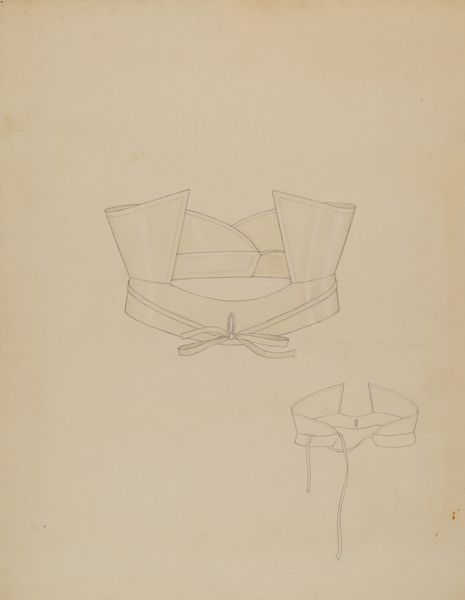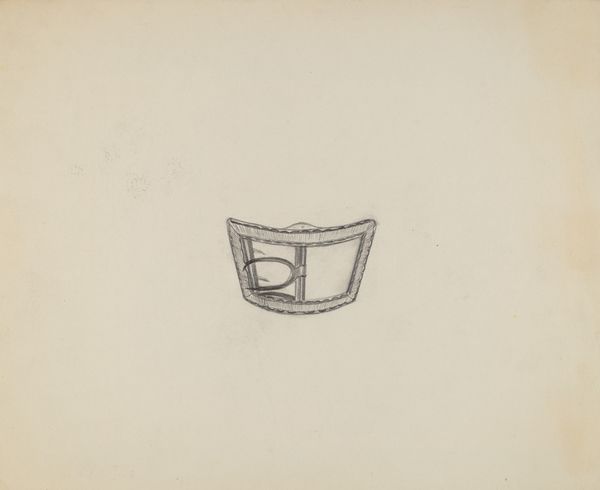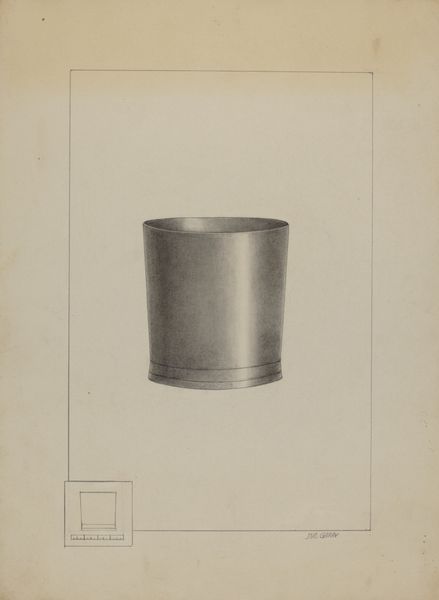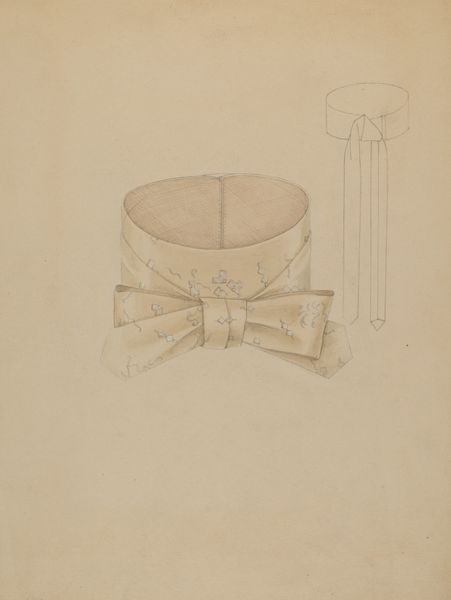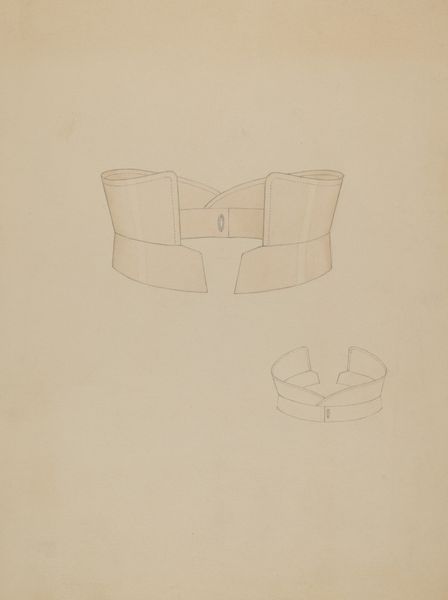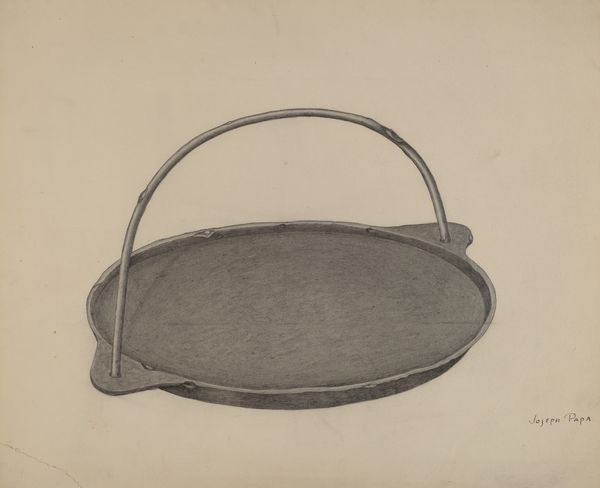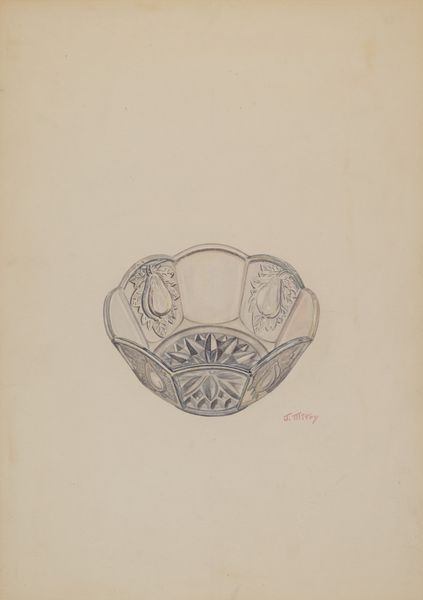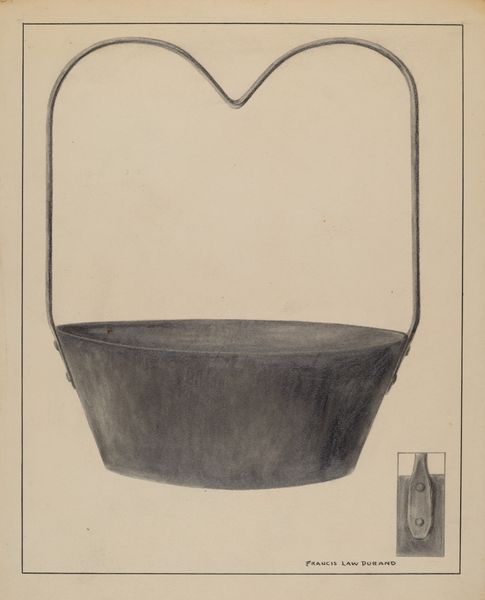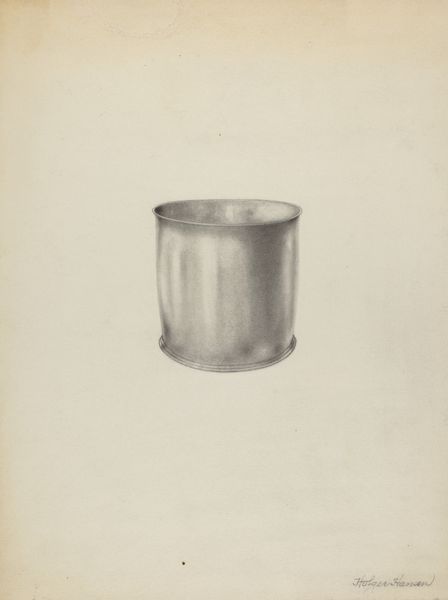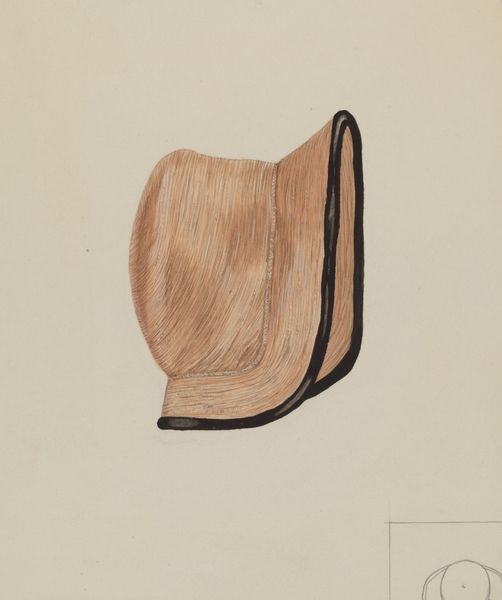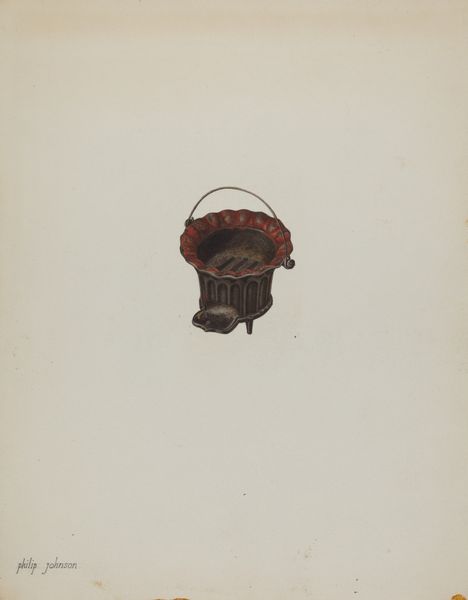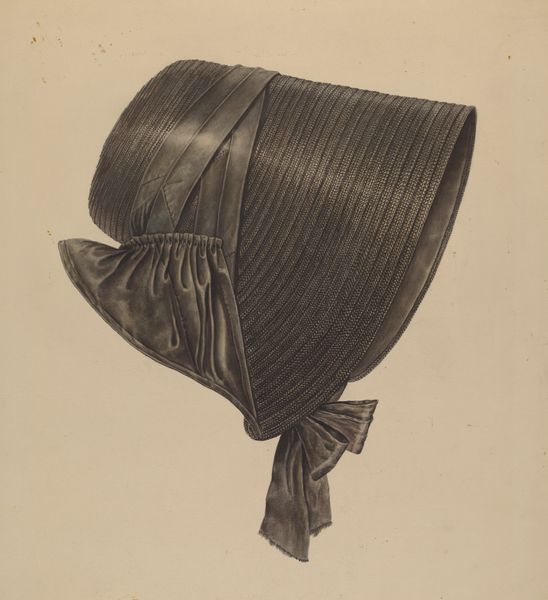
drawing, mixed-media, paper, ink
#
drawing
#
mixed-media
#
paper
#
ink
Dimensions: overall: 30.6 x 22.7 cm (12 1/16 x 8 15/16 in.)
Copyright: National Gallery of Art: CC0 1.0
Editor: So this is "Cravat," a mixed-media drawing from around 1937 by Marie Mitchell, featuring ink and paper. It strikes me as quite formal, even a little severe. What can you tell me about it? Curator: On the surface, it’s a seemingly simple image of a cravat. But let’s think about context: 1937, a period defined by the lead-up to World War II, and the looming shadow of global conflict and economic instability. Now, how might anxieties and constraints shape visual expression? Think about class; who has the economic privilege to consider fashion and ornamentation during economic uncertainty? What’s compelling here is this tension between a representation of elegance and refinement set against a backdrop of societal upheaval and economic depression. What does it mean to be interested in adornment during hardship? Editor: I hadn't considered that tension. So, it’s not just about beauty, but about the politics of representation, the privilege and role of personal appearance in a time of significant world events. The somewhat ghostly outline of what looks to be a simple collar next to the dramatic cravat brings that point home. Is this a class distinction being drawn by the artist? Curator: It absolutely gestures towards class distinctions and power. The cravat itself, historically, was a symbol of wealth and status, most prominently worn by men. The image evokes questions of identity, and representation, too. Was this designed by a woman, for example, seeking to take some of that symbolic capital? This work might be less about fashion itself and more a comment on gender and status. Editor: That's fascinating. I initially saw it as just a pretty drawing, but your perspective opens up so many layers of meaning related to societal power structures. Curator: Exactly. And by looking closely at how identity, power, and status intersect, we can deepen our comprehension of art's role in both mirroring and shaping cultural norms. I am intrigued by this reading and will want to do some additional research into Mitchell. Editor: I will too; this conversation has made me rethink my initial assumptions completely. I see a much more complex artwork now.
Comments
No comments
Be the first to comment and join the conversation on the ultimate creative platform.
